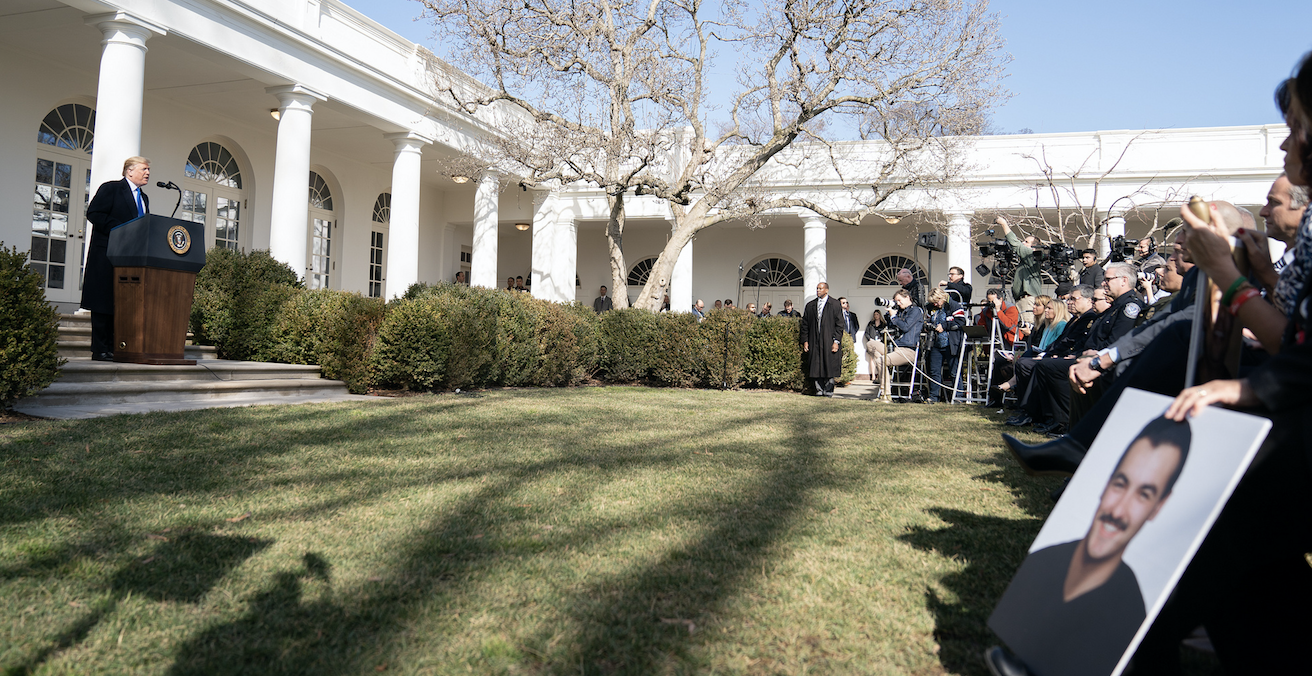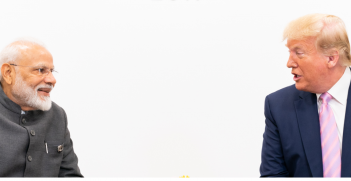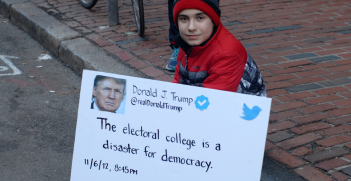Trump’s National Emergency and the Powers of the Presidency

President Trump’s national emergency declaration will have little impact on what happens on the US-Mexico border. However, the legal challenges it invites have the potential to considerably enhance or constrain presidential emergency powers in the future.
Last week, US President Donald Trump issued a proclamation declaring the existence of a national emergency on the US-Mexico border. His declaration is likely to have little impact at the actual border, where legal challenges will most probably delay action for years. Where the declaration will have a greater impact is on national politics and the future scope of emergency powers available to presidents.
The United States currently lives under more than 30 declared national emergencies. This isn’t even Trump’s first declaration of an emergency. But almost all of the emergencies declared since the National Emergencies Act of 1976 have had the narrow purpose of imposing sanctions on foreign individuals or governments for human rights abuses or other behavior the US government wants to punish.
Trump’s declaration is different – and, in the history of the National Emergencies Act, unique. Having failed to secure Congressional approval for the construction of his border wall, Trump is attempting to circumvent Congress and use the emergency declaration to simply divert funds from elsewhere in the federal budget to the wall project. Article I of the Constitution makes clear that Congress holds the power of the purse, and Congress has just explicitly refused to appropriate funds for the wall that Trump wants. Trump’s attempt to use these emergency powers to negate the will of Congress hence raises constitutional questions which worry many small-government conservatives as well as liberals.
Trump’s declaration will meet political and legal challenges which in turn will influence the future possibilities available to presidents in their use of emergency powers. It is possible for Congress to unilaterally undo emergency declarations provided they can muster veto-proof majorities in both chambers of Congress. There are unlikely to be enough Republican votes to allow this to happen. This is despite the fact the GOP fears Trump’s declaration will set a precedent for a future Democratic president to declare a national emergency to tackle issues such as gun control or climate change. In fact, the difficulty either party has in obtaining super-majorities in both houses of Congress in the modern political environment means Congress is unlikely to provide a check on presidential emergency powers, now or in the future.
The legal challenges to Trump’s action are more daunting but still surmountable, for the simple reason that the courts tend to defer to the president in matters of foreign policy and national security. A ruling in favor of the administration would enable future presidents to be much more aggressive in their use of emergency powers. Yet there are a number of complicating factors which make this a particularly poor case for the executive branch and which may yet produce a court ruling which in fact limits presidential powers.
The first is the fact that it is objectively very difficult to claim that a national emergency truly exists at the southern border. There has been no sharp rise in border crossings or in the number of unauthorized persons present in the United States; in fact, both have been on a downward trend. As he declared the emergency, Trump himself said “I didn’t need to do this, but I’d rather do it much faster,” seemingly undercutting his own argument that an emergency really exists. The courts may refuse to get involved in adjudicating the facts of the situation and instead defer to the executive branch – as the Supreme Court recently did in a case on Trump’s travel ban, Trump v. Hawaii – but they may also be worried about the precedent set by allowing a president to seize powers by declaring a fictitious emergency.
A second problem for the administration is that the emergency powers Trump wishes to use to divert funds do not seem relevant to the current situation. They allow for the diversion of funds for military construction projects or other projects “essential to the national defense” if they are needed to meet the emergency. But that is not the case here. Border enforcement in the United States is a civilian law enforcement task, not a military one, and in fact, the involvement of the military in civilian law enforcement is sharply limited by law. Nor is it at all clear that the construction of the border wall is “essential to the national defense”. The courts would hence be setting a dangerous precedent for the president’s ability to involve the military in civilian law enforcement via emergency powers, something they have good reason to resist.
If Trump is successful in using his emergency powers in such a transparently cynical way, it could have dramatic repercussions. Political polarization has made it hard for either party to get legislation through Congress, and the temptation to use unilateral executive powers has been growing. Many Republicans were critical of President Barack Obama for his use of executive orders, and Trump promised to end such “executive lawlessness.” He no longer seems to share that view. A victory in the courts would hand new tools for doing so to future Republican and Democratic presidents alike.
But ruling through executive action is polarizing in itself. It sidesteps the need to build consensus and transforms elections into apocalyptic showdowns in which the winning side can unilaterally impose its will on the other. The evolution of the American political system further in this direction promises only increased polarization, wild swings in policies between different administrations and a further raising of the perceived stakes in elections, which makes rational thinking and compromise all the more difficult. This is certainly one way out of Washington’s perpetual gridlock, but it is not a very attractive one.
Dr Andrew Gawthorpe is a historian of the United States at Leiden University in the Netherlands. Follow him on Twitter @andygawt. His current book project is a history of how trade and immigration have shaped debates over national identity throughout US history.
This article is published under a Creative Commons License and may be republished with attribution.





